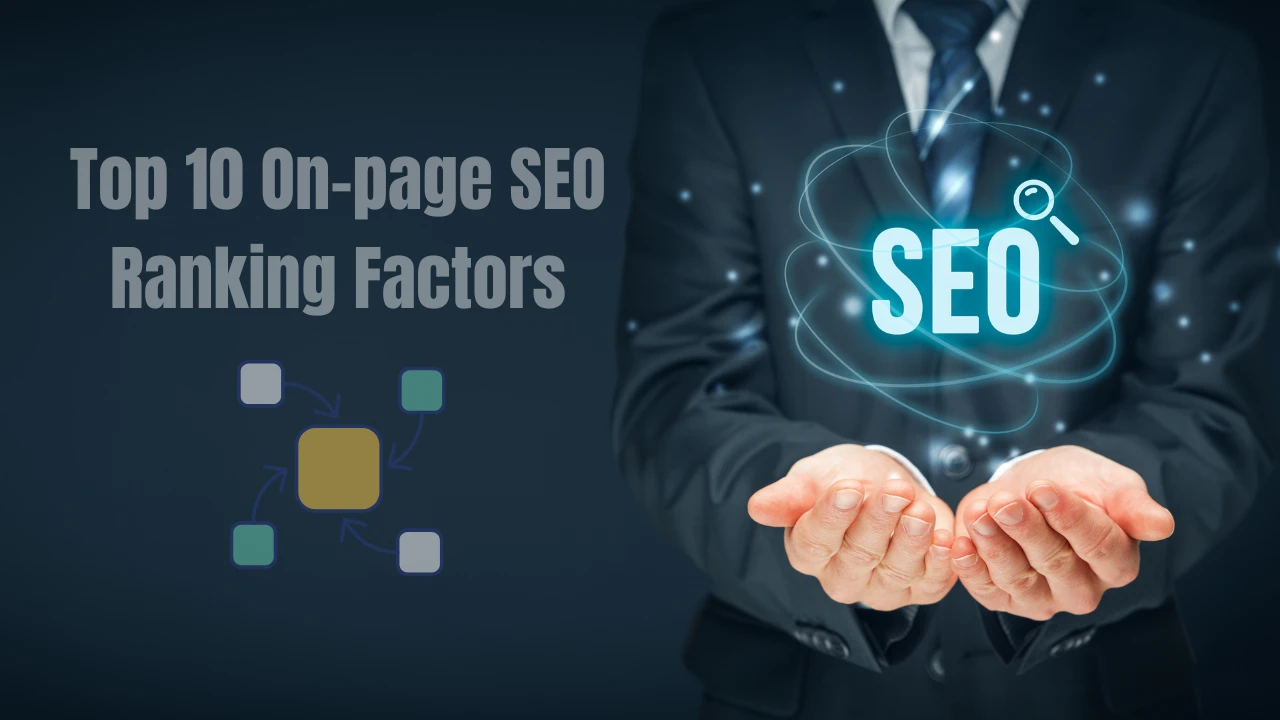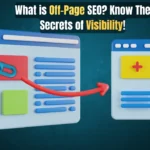What is On-Page SEO Know the Top 10 Ranking Factors
On-page SEO refers to the optimization of website elements to improve search rankings. It affects how well a page can rank on search engines.
Taking the time to harness on-page SEO can significantly impact your site’s visibility and user experience. Key components include optimizing title tags, meta descriptions, content, and URLs to ensure they’re both user- and search engine-friendly. It’s crucial to implement relevant keywords, mobile responsiveness, and fast loading times.
By paying attention to these factors, you create a foundation that supports other SEO strategies. On-page SEO is the first step in signaling to search engines what your pages are about, helping them index your content correctly and present it to users.
On-page Seo Basics
When talking about driving traffic to your website and securing a top spot on search engine result pages (SERPs), On-Page SEO is a fundamental player. This aspect of search engine optimization focuses on optimizing individual web pages to rank higher and earn more relevant traffic in search engines. It’s not just about content but also about the overall structure and setup of your website, ensuring that it speaks the language search engines understand.
Understanding On-page Seo
At its core, On-Page SEO refers to the practice of optimizing web pages to improve a website’s search engine rankings and garner organic traffic. This encompasses not only content and images but also the HTML source code, such as tags and structured data. Proper On-Page SEO helps search engines analyze your website and the content connected to it, thereby discerning whether a searcher’s query is relevant to your site.
Here are some key aspects of On-Page SEO:
- Title Tags: These HTML elements specify the title of a web page and are a critical on-page SEO factor.
- Meta Descriptions: Providing a summary of the page’s content, they influence click-through rates from SERPs.
- Header Tags: From H1 to H6, header tags help organize content for readers and search engines.
- URL Structure: Search engine friendly URLs favorably impact a website’s SEO.
- Alt Text for Images: It aids search engines in interpreting the subject matter of images.
- Page Performance: Including speed, mobile-friendliness, and overall user experience.
- Internal and External Links: These influence the relevance and authority of your web pages.
- Content Quality: Engaging, keyword-rich, and value-adding content drives search engine rankings as well as user satisfaction.
Benefits Of On-page Seo
| Benefit | Explanation |
|---|---|
| Improved Rankings | High-quality, optimized content is more likely to rank well in search engines. |
| Increased Traffic | Higher rankings typically lead to more organic traffic from search engines. |
| User Experience | Optimized pages often translate to a better user experience, keeping visitors on your site longer. |
| Conversion Rate | By aligning page content with user intent, On-Page SEO can lead to higher conversion rates. |
| Page Speed | SEO efforts often involve improving page speed, a significant factor for ranking and user experience. |
In essence, a strong On-Page SEO strategy not only makes your site more visible in search results but also lays the groundwork for an enhanced user journey once visitors land on your pages. By keenly focusing on On-Page optimization, you set the stage for sustained organic growth and a formidable online presence.
Key Elements Of On-page Seo
On-page SEO is a cornerstone of any successful website’s search engine strategy. For businesses looking to improve their online presence, partnering with a digital marketing agency can make all the difference. On-page SEO involves optimizing various front-end and back-end components of your site so that search engines can crawl effectively, and users can navigate with ease, ultimately improving organic search rankings. By focusing on the following key elements, a digital marketing agency can ensure your website communicates effectively with search engines and aligns with user search intent.
Keyword Research
Keyword research provides insight into the queries that your target audience actively searches for online. This foundational step involves:
- Identifying relevant and high-volume search terms.
- Analyzing the competition for those keywords.
- Understanding keyword intent to match content effectively with search queries.
Title Tags And Meta Descriptions
Both title tags and meta descriptions directly influence your click-through rate (CTR) from search engine results pages (SERPs). They should:
- Be concise and compelling, with relevant keywords tailored to each page’s content.
- Include your brand or website name for recognition.
- Encourage users to click through to your content.
Optimizing Content
Content optimization not only involves the strategic placement of keywords but also:
- Creating informative, valuable content that addresses the users’ questions and needs.
- Using related phrases and synonymous keywords for semantic search benefits.
- Ensuring content readability through simple language and short paragraphs.
Header Tags
Effective use of header tags
- Structuring content in a logical order.
- Highlighting the importance of sections within your content.
- Improving user experience by breaking up text for easier reading.
Url Structure
A well-crafted URL structure can make a significant difference in how both users and search engines perceive the relevance of a page. URLs should:
- Be concise and easy to read.
- Include target keywords for improved search relevance.
- Avoid excessive parameters and numbers.
Image Optimization
Image optimization entails various techniques to reduce file size and improve load times while maintaining visual quality. This includes:
- Using descriptive file names and alt attributes with keywords.
- Choosing the right format (e.g., JPEG, PNG, WebP) for different image types.
- Implementing responsive images for different device displays.
Internal And External Links
Links are the pathways that connect content across your site and to other domains. Internal and external linking strategies should:
- Use descriptive anchor text highlighting the linked content’s value.
- Link to high-quality, authoritative sources when necessary.
- Promote user navigation to related content within your site, reducing bounce rates.
Page Speed And Mobile Optimization
Page speed and mobile optimization are critical for user experience and SEO. To keep your website performing well:
- Minimize the load time of pages using tools to compress images and minify code.
- Ensure your website is mobile-friendly, catering to the vast number of users on mobile devices.
- Take advantage of caching and content delivery networks (CDNs) to speed up delivery.
Best Practices For On-page Seo
Mastering the art of On-Page SEO is crucial for boosting your website’s visibility and ranking in search engine results pages. Implementing the best practices for On-Page SEO ensures that your content not only appeals to search engines but also provides value to your audience. The following strategies will guide you in optimizing your web pages for better performance and search engine friendliness.
Write High-quality Content
Nothing beats the power of high-quality, engaging content. Engaging content captures the attention of your audience and encourages them to stay longer on your site, reducing bounce rates. Endeavor to write informative and relevant posts that address the needs of your visitors and answer their questions. To achieve this:
- Research your topic thoroughly.
- Provide actionable insights.
- Structure your content in an easily digestible format with subheadings and bullet points.
Use Keywords Strategically
Keywords are the cornerstone of SEO. The right choice and placement can elevate your content’s visibility on search engines. Place your primary keywords in the title tag, headers, and throughout the content, ensuring a natural and reader-friendly approach. Remember to:
- Include long-tail keywords for more specific search queries.
- Avoid keyword stuffing, which can harm readability and lead to penalties.
- Utilize latent semantic indexing (LSI) keywords to support context.
Ensure Proper Html Structure
Organized HTML structure enhances both usability and search engine indexing. Use header tags (H1, H2, H3) to structure your content hierarchically. Each page should have one H1 tag typically used for the title, followed by H2 and H3 tags for subsections.
Major Section Heading
Subsection Heading
Optimize For Mobile
As mobile searches continue to rise, having a mobile-friendly website is non-negotiable. Implement responsive design techniques to ensure your site adapts to various screen sizes, offering an optimal viewing experience for mobile users. Tools like Google’s Mobile-Friendly Test can help assess your site’s performance on mobile devices.
Improve Page Load Speed
Page load speed is a critical ranking factor for search engines. Sites that load quickly offer a better user experience, which search engines favor. Compress image sizes, minimize HTML/CSS/JavaScript, use a reliable hosting service, and leverage browser caching to enhance load times.
| Action | Benefit |
|---|---|
| Image Optimization | Reduces file sizes |
| Minification of Code | Removes unnecessary characters |
Regularly Update And Maintain Your Website
Search engines prefer websites that are dynamic and frequently updated. Regularly adding new content and updating existing pages signals to search engines that your site is current and actively managed. Implement a content calendar to stay consistent and periodically review your site for broken links, outdated information, and other issues that could affect performance.
Frequently Asked Questions
What Is Of On-page And Off-page Seo?
On-page SEO involves optimizing web pages to rank higher in search engines, focusing on content and HTML. Off-page SEO refers to actions taken outside of your site to impact rankings, primarily through backlinks.
What Is On-page Or In Page Seo?
On-page SEO optimizes individual web pages to rank higher and earn more relevant traffic in search engines. It involves content quality, keyword placement, headers, and HTML tags.
What Is On-page Seo Vs Technical Seo?
On-page SEO involves optimizing web content for search engines and users. Technical SEO focuses on site architecture, improving crawlers’ efficiency in indexing content.
What Does On-page Seo Services Include?
On-page SEO services encompass optimizing meta tags, content, images, URLs, and internal links. These adjustments help search engine crawling and enhance user experience, directly impacting site ranking.
Conclusion
On-page SEO is crucial for website visibility and user engagement. By optimizing individual webpages, we enhance our site’s relevance and authority. Effectively leveraging title tags, meta descriptions, and quality content drives better rankings. Let’s commit to these practices for optimal search engine recognition and a thriving online presence.












